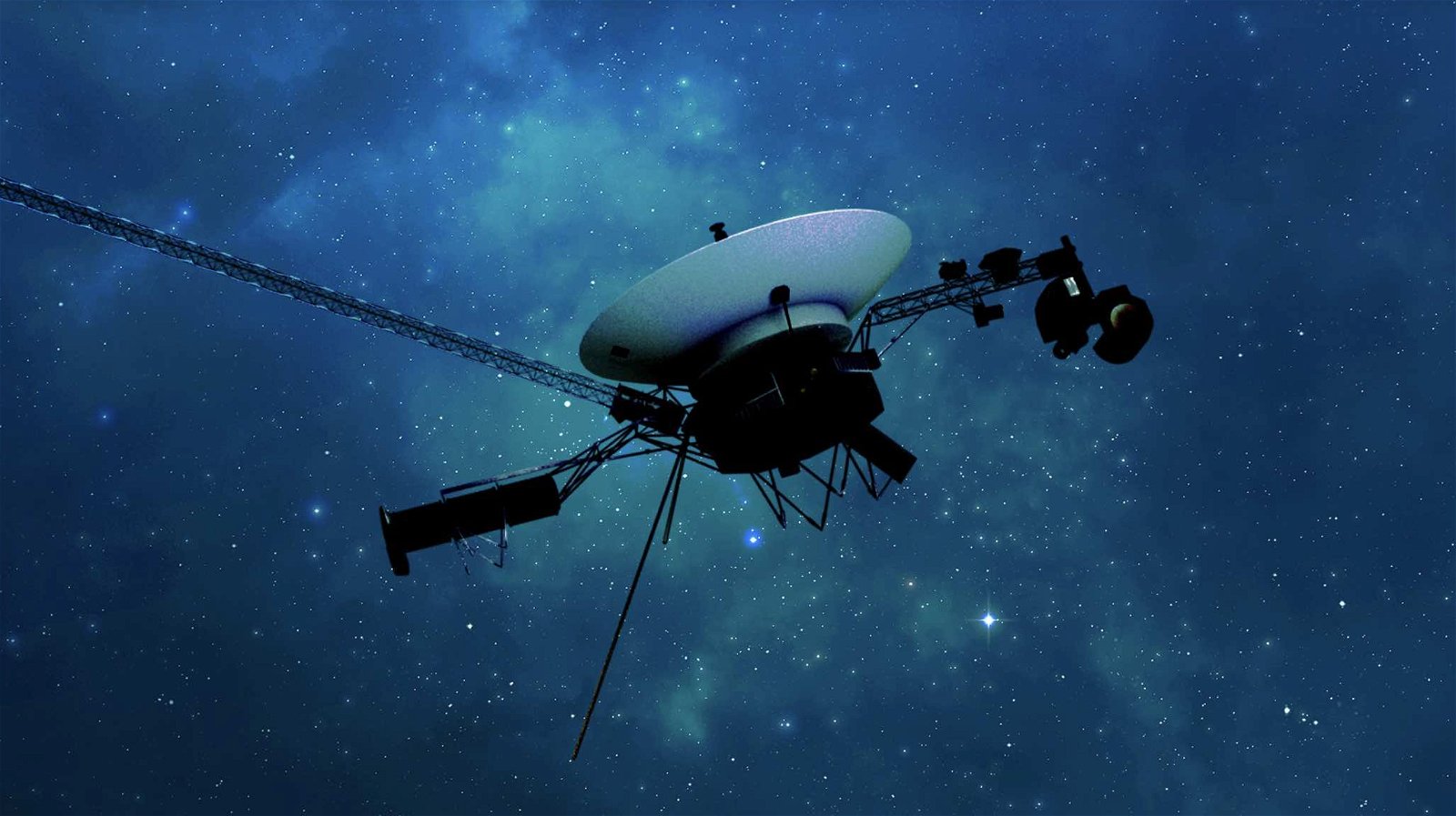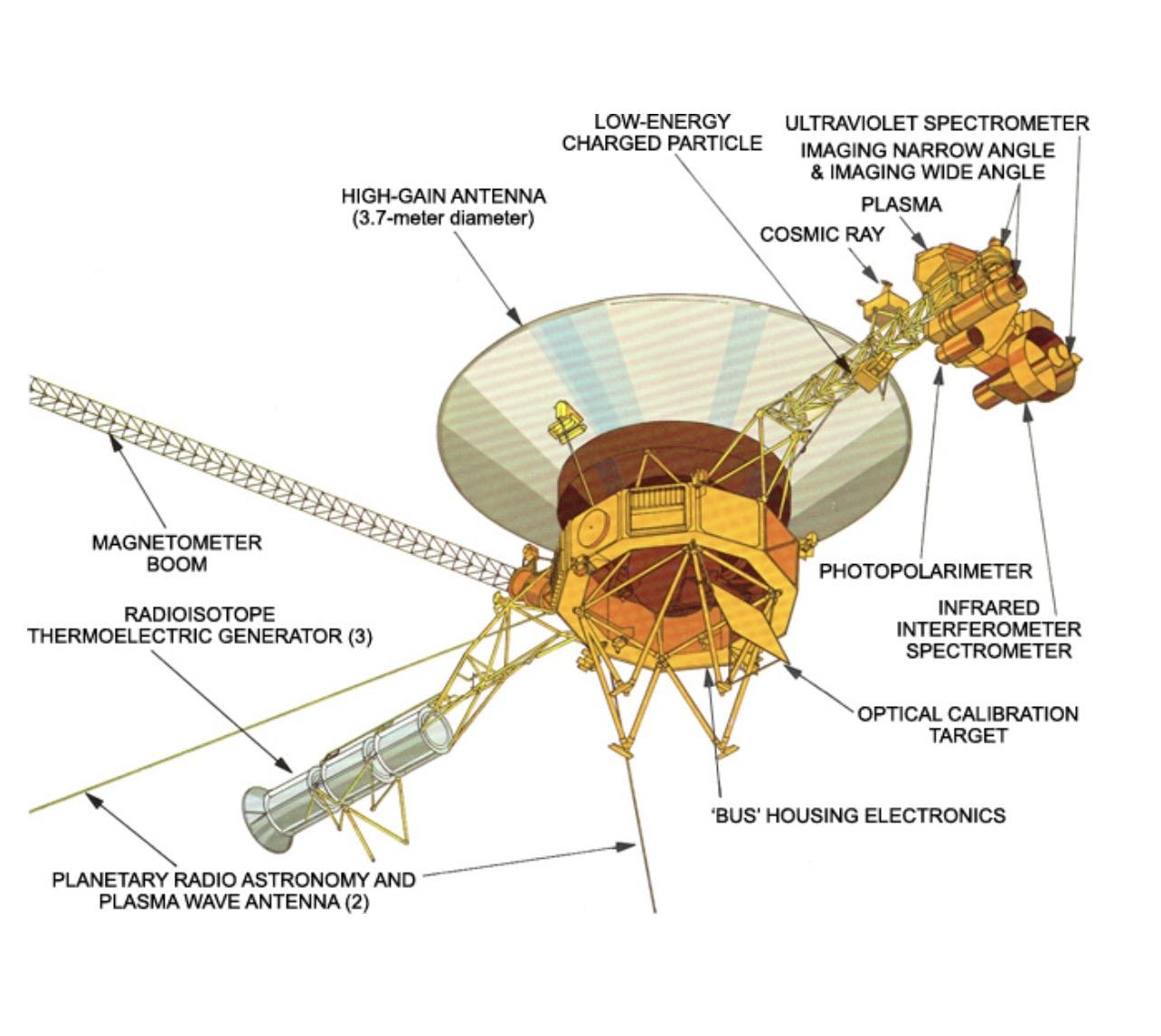

Welcome to this week’s installment of The Intelligence Brief… earlier this week, NASA reported the successful restoration of communication with its famous Voyager I probe, which is currently the farthest humanmade object from Earth. This week, we’ll take a look at 1) how Voyager was finally able to phone home, 2) what the iconic space probe represents to NASA’s legacy, 3) why the science instruments on board the spacecraft are so important, and 4) why a few additional tweaks will still be required to keep the aging space probe functional.
Quote of the Week
“It would be the biggest miracle if we get [Voyager] back.”
– Suzanne Dodd, Voyager Project Manager
Latest News: In recent articles at The Debrief, Tim McMillan provides us an update on what new photos reveal about the Boeing Orca XLUUV, the Navy’s autonomous undersea vehicle featuring a modular payload design. Elsewhere, Chris Plain reports on how an international team of astronomers say they just witnessed a black hole appear out of nowhere. As always, all of our recent stories can be found at the end of this week’s newsletter.
Podcasts: In podcasts this week, on The Debrief Weekly Report, Stephanie and Kenna go green as they discuss a novel breakthrough in the successful generation of electricity by algae. Meanwhile, over on The Micah Hanks Program this week we examine a concerning incident that recently had many worried about a possible medical emergency on the ISS, as well as a look at the dangers many astronauts have faced in orbit in the past. You can subscribe to all The Debrief’s podcasts on our Podcasts Page.
Video News: This week on Rebelliously Curious, Chrissy Newton is joined by John Priestland and Dr. Daniel Stubbings of the UK-based uNHIdden initiative. Be sure to check out other great content from The Debrief on our official YouTube Channel.
Now, it’s time to look at how NASA achieved what had once been considered an impossible feat: full restoration of communication with the furthest-travelled human-made spacecraft.
NASA’s Voyager Probe Finally Phones Home
After seven months of silence, NASA’s iconic Voyager 1 probe is back on track and sending useable scientific information from its ever-more-distant position from Earth on its course through interstellar space.
The spacecraft, currently the furthest human-made object from Earth, had remained mostly incommunicado since a technical issue that first came to light in November 2023 halted normal communications from the space probe.


Earlier this year, it was previously reported that Voyager 1 had begun returning usable data about its onboard systems after the team managing the probe at NASA’s Jet Propulsion Lab in California overcame a few engineering hurdles that had initially kept them in the dark about the spacecraft’s performance for close to five months.
Voyager and NASA’s Legacy
Launched more than 46 years ago, the twin Voyager I and II probes represent the longest-running missions in NASA history, as well as the farthest spacecraft ever to have travelled from Earth.
During their missions, both Voyager spacecraft visited Jupiter and Saturn, and Voyager II also flew by Uranus and Neptune.
Following a breakthrough in April that allowed some limited science data, including health data and information on the spacecraft’s status, to be returned from Voyager I, the second step in NASA’s long-distance engineering efforts was initiated on May 19, when a command was beamed to the spacecraft across a distance of approximately 15.1 billion miles.
NASA’s JPL has since reported that two of Voyager’s four science instruments subsequently resumed normal operation modes immediately upon receipt of the message. Although the other two instruments on board the probe still required some troubleshooting, NASA says that all systems are currently back online.
Voyager’s Suite of Science Instruments
It is fortunate that Voyager has resumed normal operations since the four instruments onboard the famous spacecraft are designed to study plasma waves, magnetic fields, and particles. This allows NASA an unprecedented opportunity to examine these phenomena from a greater distance than any other spacecraft can.


Voyager 1 and Voyager 2 are the only spacecraft to have directly collected information from positions in interstellar space, which lies beyond the heliosphere—the protective bubble of magnetic fields and solar wind generated by the Sun.
Although NASA reported this week that Voyager is back online, a few fixes and minor adjustments will still be required before the decades-old spacecraft’s onboard systems reach true full functionality.
Back Online, but Maintenance is Still Needed
Among the existing issues engineers need to address is the resynchronization of the timekeeping software on board the probe’s computer systems. This will hopefully prevent additional communication issues similar to those that left Voyager partially inoperable for the last seven months.
NASA says that maintenance will also need to be performed on the probe’s digital tape recorder. This recorder stores data for the plasma wave instrument and transmits it to Earth on two occasions every year. Most of the science data from the Voyagers is sent directly to Earth in real-time without being recorded.
Bringing Voyager back online represents another milestone for NASA, particularly after Voyager’s Project Manager, Suzanne Dodd, told Ars Technica back in February that “it would be the biggest miracle if we get [Voyager] back.”
That concludes this week’s installment of The Intelligence Brief. You can read past editions of The Intelligence Brief at our website, or if you found this installment online, don’t forget to subscribe and get future email editions from us here. Also, if you have a tip or other information you’d like to send along directly to me, you can email me at micah [@] thedebrief [dot] org, or Tweet at me @MicahHanks.


Here are the top stories we’re covering right now…
- No, Smartphones and Computers Didn’t Kill Penmanship. It’s Been “Dead” for Centuries.
It is a common belief that modern technology has led to the decline of penmanship. It turns out that it has been terrible for centuries.
- 600,000 Years Ago, A Transfer of Ancient Knowledge Kicked Off a Sudden and Rapid Advance in Technology
An analysis of artifacts from over 57 sites around the world reveals a sudden and rapid advance in technology 600,000 years ago.
- U.S. Air Force and Lockheed Martin Test Advanced Mk21A Missile Reentry Vehicle Over the Pacific
The USAF and Lockheed Martin have announced the successful completion of a test involving the Mk21A future intercontinental ballistic missile reentry vehicle.
- What’s That? Look at What NASA’s Lunar Reconnaissance Orbiter Just Spotted on the Far Side of the Moon
Look at what has turned up in new images of the far side of the Moon captured by NASA’s Lunar Reconnaissance Orbiter.
- Scientists Produce Black Hole ‘Plasma Fireballs’ on Earth in New Breakthrough Experiment
Researchers have produced high-density “plasma fireballs” on Earth, recreating conditions that naturally occur around black holes.
- The Quest for “The Quest” This week on The Debrief Weekly Report…
In this week’s episode of the DWR, Stephanie and Kenna go green as they discuss a novel breakthrough in the successful generation of electricity by algae. The dynamic duo also discuss the Einstein Telescope and the discovery of the lost ship, The Quest, off the coast of Newfoundland, Canada.
- Astronomers Say They Just Witnessed a Massive Black Hole Appear Out of Nowhere
An international team of astronomers studying a distant galaxy say they just witnessed a black hole appear out of nowhere.
- Look: New Images Showcase the Navy’s Cutting-Edge “Orca XLUUV” Autonomous Underwater Drone
New photos reveal the size and potential of Boeing’s Orca XLUUV, the Navy’s autonomous undersea vehicle featuring a modular payload design.
- “Gendered” AI Partner Boosts Participation and Productivity From Women in Team Projects
Cornell researchers found that women team members tended to participate more when an AI partner also sounded female.
- Scientists Launch Pioneering Experiment to Demonstrate Advanced Zero-Fuel Energy Harvesting in Space
The Luxembourg Institute of Science and Technology has launched a program to test an innovative new form of energy harvesting in space.
- Planets Orbiting Burnt-Out Stars May Be Ideal Targets in the Search for Alien Life
Researchers studying the dynamics of white dwarfs say that these burnt-out stars are ideal places for astrobiologists to search for life.
- Invention Inspired by Superman’s X-ray Vision Will Let Your Mobile Device ‘See’ Through Walls
Scientists have created a scanning chip inspired by Superman’s X-ray vision that can let your mobile device see through walls.
- Deep in the Unexplored Ocean, a New Squid Species Has Been Found Carrying Giant Eggs
A new species of deep ocean squid carrying giant luminous eggs has been discovered by researchers.
- The Language On This 1,000 Year Old Stone is a “Glyph Breaker’s Nightmare.” Scientists Want to Use AI to Crack It.
The Singapore Stone has stood as one of Southeast Asia’s most enigmatic artifacts. Now, researchers want to use AI to decode its mysterious symbols.
- Study Finds UFO Witnesses May Have Personality Traits That Increase Likelihood of Sightings
UFO witnesses may possess specific personality traits that increase their likelihood of encountering such phenomena.
- Einstein Telescope to Usher New Era in Astrophysics with Observations of Gravitational Waves
The Einstein Telescope, a state-of-the-art new gravitational wave detector, could mark the beginning of a new era in astrophysics.
- Missing Wreckage of Explorer Ernest Shackleton’s Final Ship Has Been Located
Explorer Sir Ernest Shackleton’s ship Quest, which he used to make his last voyage, has now been discovered off the coast of Newfoundland, Canada.
- Scientists Are Using This Living Organism to Generate Power
Research scientists from Concordia University have designed a cutting-edge fuel cell that uses a living organism to generate power
- Emergency on the ISS? Disturbing Audio Led to Concerns About a Medical Situation in Space
This week, we examine an incident that unfolded this week that led to concerns about a possible medical emergency on board the International Space Station.
- Secret Military Tech and UAP “Silent Giants”
This week on The Micah Hanks Program, we look at some of history’s most famous cases involving encounters with “silent giants” that include massive black triangular UAP.
- First Wooden Satellite Breaks New Ground in Sustainable Space Exploration. Are Wooden Space Shelters Next?
Researchers at Kyoto University and Sumitomo Forestry have unveiled the world’s first wooden satellite, breaking new ground in space technology.
- Two Million Years Ago, an Encounter between the Sun and Something Outside the Solar System Altered All Life on Earth
Two million years ago our Sun collided with something from outside our Solar System, potentially affecting all living things on Earth.
- Israeli Military Gets Medieval By Deploying 12th Century Trebuchet Against Hezbollah Fighters
The IDF uses a medieval trebuchet to combat Hezbollah on the Lebanon border, highlighting unconventional tactics in modern warfare.
- Engineers Studying One-Dimensional Materials Discover the World’s Thinnest Wire
Swiss engineers studying one-dimensional materials say they have stumbled upon what may be the world’s thinnest wire.
- Anomalous Satellites? DARPA Deploys New System for Detecting Unusual Objects in Orbit
DARPA has a new tracking system to detect objects in orbit that exhibit anomalous behavior that may threaten U.S. national security.
- Mysterious Space Object Transmitting Radio Signals Every 54 Minutes Baffles Scientists
Astronomers have detected a mysterious radio signal from deep space that evades current scientific understanding.
